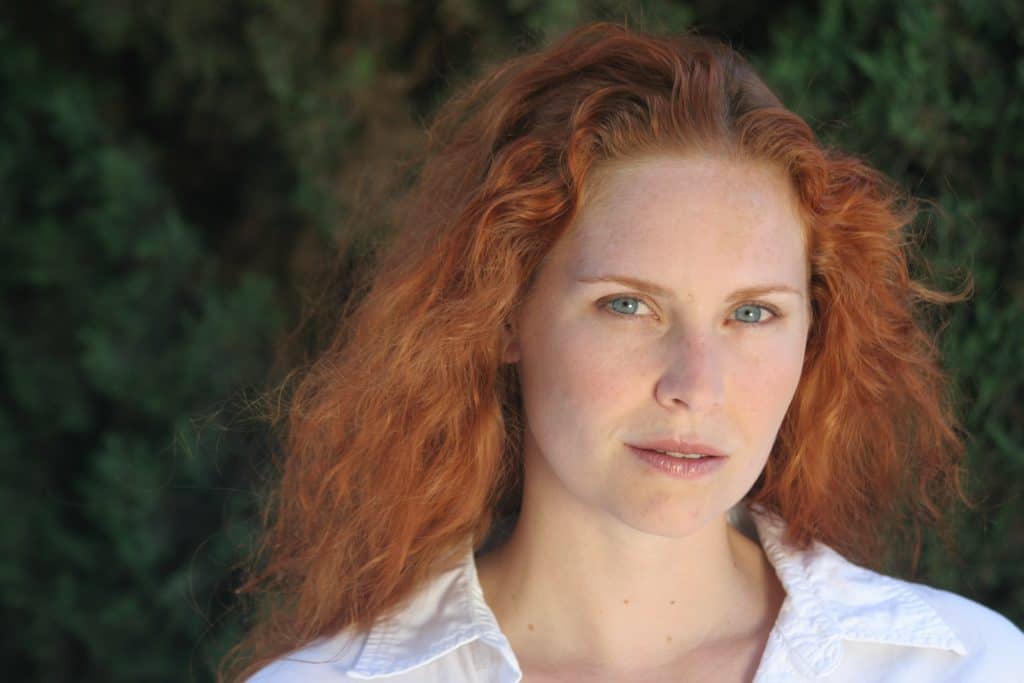It’s becoming more common for people to dye their hair every color of the rainbow, abandoning their natural hair color for years. However, there is no escaping your natural hair color as roots always end up growing back out. While it might become harder to tell what someone’s natural hair color is, for the most part hair color is broken down into four main categories: black, brown, blond, and red. Across each of these main hair colors is a wide variety of shades and it is a little difficult to find statistics on hair color distribution in the global population.
What is known is that black hair is the most common, while red is the rarest and brown and blond hair falls somewhere in between.
- Black Hair/Very Dark Brown Hair
- Brown Hair (Brunette)
- Blond/e Hair
- Red Hair
Geographic Distribution (Most Common In): Africa (all parts), Asia (all parts), Latin America, Eastern Europe, Southern Europe, and the Americas
Shade Range: Deepest Brunette; Soft Black; Raven Black; Jet Black

photo source: Wikimedia Commons via Tibchris
The most common hair color in the world is black and its found in wide array of background and ethnicities. About 75 to 85% of the global population has either black hair or the deepest brown shade. People with black hair vary widely in skin tone, from pale white skin to very dark skin.
While is found nearly everywhere in the world, its greatest distribution is in Asia and Africa. Black hair is also common in Eastern Europe, Southern Europe, and Latin America. Of all the hair colors, black hair has the highest amount of eumelanin, which causes darker hair (including brown hair).
Did You Know?
As people age, they continue to produce black eumelanin, which is what makes black hair black, but stop producing other types of melanin, resulting in grey hair.
Geographic Distribution (Most Common In): Europe, Americas, Australia, Canada and Asia
Shade Range: Lightest Brown; Maple Brown; Walnut Brown; Dark Chestnut Brown; Milk Chocolate Brown; Dark Brown; Deepest Brunette

photo source: Wikimedia Commons via THOR
Brown hair is the second most common hair color after black hair, but surprisingly it only makes up about 11% of the global population (the darkest brown hair is included with black hair). Brunettes are
found pretty much around the world with a higher concentration in Europe and in countries with large populations of European descendants.
In Western culture, brunettes are seen as the “rivals” of blondes and are believed to be smart, sophisticated, serious, stable, and self-sufficient. In various media brunette women are pitted against blondes for the affections of men. These however, are just stereotypes and shouldn’t be taken seriously as hair color does not necessarily effect someone’s personality.
Did You Know?
Brunettes have a higher chance than those with any other hair color to become addicted to nicotine. The high levels of melanin in brown hair makes it difficult for their livers to metabolize the nicotine.
Geographic Distribution (Most Common In): populations of Northern European descent among some Asians
Shade Range: Ash-blond; Platinum Blond; Dirty Blond; Golden Blond; Honey Blond; and Strawberry Blond

photo source: Wikimedia Commons via Fuguito
Despite what appears to be a heavy prevalence of blond hair – especially in movies, TV, and social media – the percentage of people with natural blond hair is quite low, only comprising about 3% of the world’s population. However, many people, across all ethnic backgrounds, enjoy bleaching their hair blond, which accounts for the high number of blonds out there.
Natural blond hair is most common in Northern Europe and populations with a large population of Northern European descendants. This makes blond hair very common in the western world, but it is relatively scarce elsewhere. But natural blond hair can be found in some parts of Asia, Africa, and various Pacific islands.
Did You Know?
The Melanesians of New Guinea are the only dark-skinned group of humans known to have a high blond hair rate and the gene that causes blond hair in Melanesians is different than the blond gene for Caucasians.
Geographic Distribution (Most Common In): Northern and western fringes of Europe, especially the British Isles (mainly Ireland and Scotland); also found in small numbers in eastern and southern Europe.
Shade Range: Deep Burgundy; Bright Copper; Auburn; Burt Orange; Red-Orange; and Strawberry Blond

photo source: Wikimedia Commons via dusdin
While gingers are found around the world (yes, even in Africa and Asia), they are primarily located in the northern and western fringes of Europe, especially Ireland and Scotland. Regardless of ethnic heritage, redheads tend to have fair skin that is much lighter than the skin of non-redheads.
Did You Know?
Redheads are more sensitive to pain and need more anesthetic than people with other hair colors
because the mutation that causes red hair also affects their pain perception.




